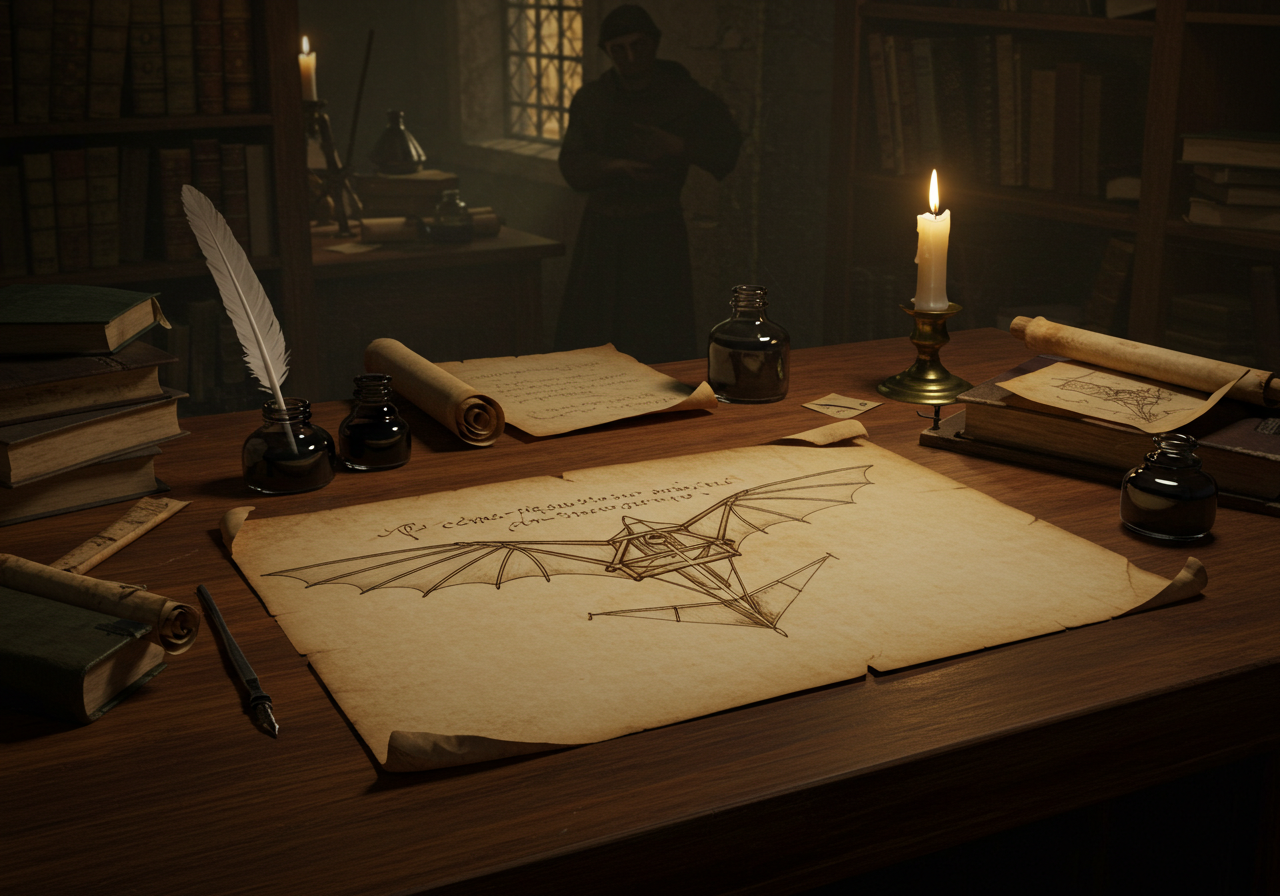The Manuscript That Predicted Flight

A Dream of the Sky Before the Wright Brothers
Long before jets, helicopters, or even hot air balloons, brilliant minds looked to the skies and imagined flight. One of the most mind-blowing history facts is that centuries before airplanes existed, a mysterious manuscript described detailed plans for human-powered flying machines. This document didn’t just dream — it drew designs.
Leonardo da Vinci: Artist, Engineer, Aviator?
The most famous example comes from none other than Leonardo da Vinci. In the late 1400s, da Vinci sketched flying machines with flapping wings, rotating propellers, and gliders. His “Codex on the Flight of Birds” (c. 1505) analyzes bird motion and suggests ways humans might mimic it. He lacked the materials and engines needed — but conceptually, he was centuries ahead of his time.
If flight was imagined long before it became real… what other ancient knowledge are we only beginning to understand?
🗿 Discover the Survival Secrets of Lost Civilizations
What if ancient societies knew how to survive without electricity, stores, or modern tools? The Lost Generator uncovers powerful self-sufficiency techniques inspired by forgotten knowledge. A must-read for history lovers, preppers, and curious minds alike.
⚡ Reveal the Ancient Survival BlueprintThe Ornithopter Concept
One of da Vinci’s designs, the ornithopter, resembles a giant bat-like machine with wings powered by human arms and legs. Though never built successfully in his time, the concept reflects an early understanding of aerodynamics. He even noted that lift required more surface area than weight — a fact confirmed much later by aviation pioneers.
Other Early Mentions of Flight
Da Vinci wasn’t the only one. Ancient Chinese inventors experimented with manned kites, and Islamic polymath Abbas Ibn Firnas (9th century) is said to have glided short distances using bird-like wings. These ancient inventions ahead of time show that the dream of flight crossed cultures and centuries.
Why These Ideas Were Ignored
For most of history, the science of flight was misunderstood. Theories of gravity, air pressure, and propulsion were undeveloped. Many dismissed flying machines as fantasy or folly. Only in the 18th and 19th centuries — with advancements in physics — did the world start to believe flight was possible.
The Manuscripts Survived
Today, da Vinci’s manuscripts are housed in museums and libraries, including the British Library and Biblioteca Reale in Turin. They show not only his genius but his willingness to push boundaries. In many ways, his flying sketches laid a foundation for inventors who came hundreds of years later.
Want More Inventions Ahead of Their Time?
Check out our post on The Library That Vanished Overnight to learn how ancient knowledge — possibly including early flight ideas — was tragically lost to fire and history.
External Historical Sources
For an in-depth look at da Vinci’s aviation work, visit Smithsonian’s article on Leonardo’s flying machines, which breaks down the genius and limitations of his visionary designs.
Final Thoughts
Flight didn’t begin with the Wright brothers — it began in the minds of dreamers who dared to imagine humans soaring through the sky. Manuscripts like da Vinci’s remind us that even in a world without engines, vision can take flight.
What invention do you think was “too early” for its time? Drop your thoughts in the comments!
Curious about lost civilizations and ancient mysteries?
What if ancient societies knew how to survive without electricity, stores, or modern tools? The Lost Generator uncovers powerful self-sufficiency techniques inspired by forgotten knowledge. A must-read for history lovers, preppers, and curious minds alike.
Explore more ➜ 🗿 Discover the Survival Secrets of Lost Civilizations
📌 Original Content Notice: This article was originally published on Daily Fact Drop – Your Daily Dose of Mind-Blowing Facts. All rights reserved.
Copying, reproducing, or republishing this content without written permission is strictly prohibited. Our editorial team uses factual research and original writing to bring unique curiosities to our readers every day.